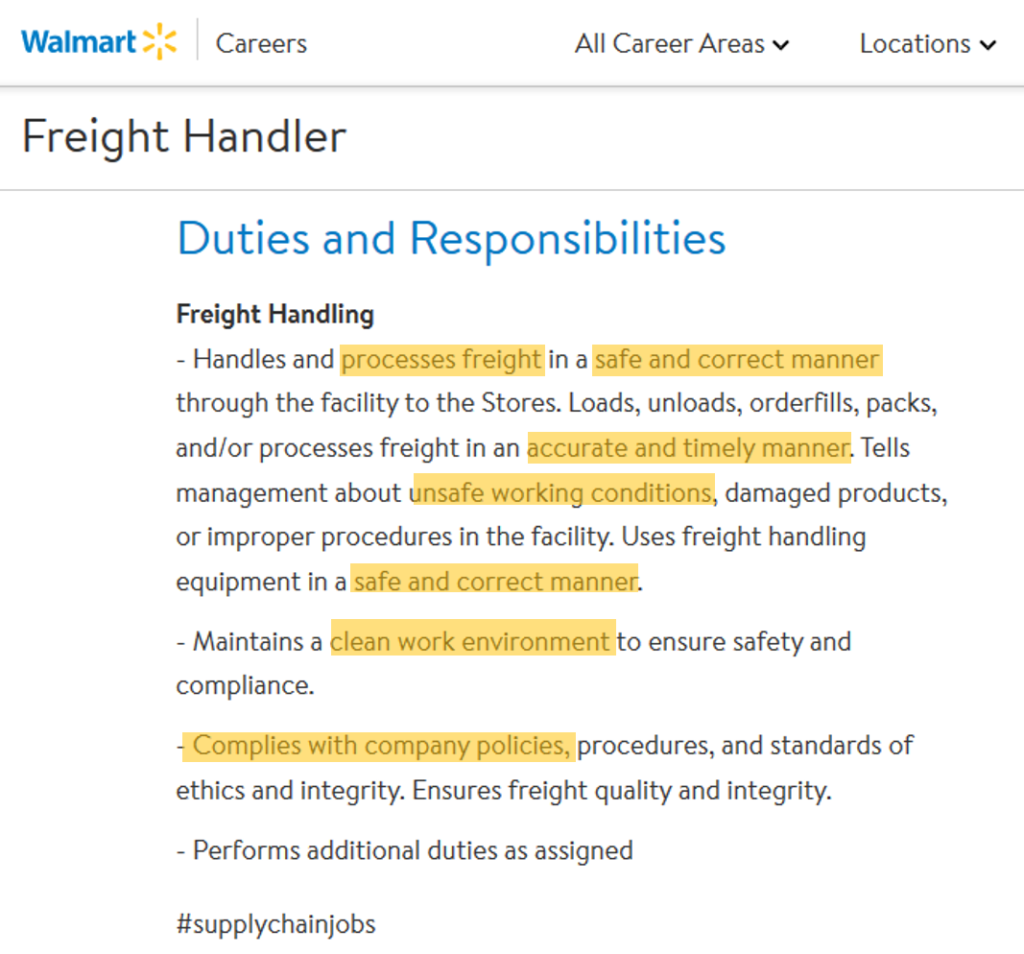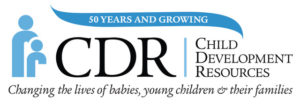The Basics of Résumé Writing
Do Your Research
As you get ready to write your resume, it’s important to do research about the specific position or type of position you will be applying for.
What are some keywords you see in the description of the required qualifications and characteristics? See an example below from a real position posting at Walmart Distribution for a Freight Handler in Williamsburg, VA.
Notice in the example that there is an emphasis on handling freight correctly and on working efficiently. It also seems very important to the employer that the applicant have a demonstrated ability to do work safely and to follow procedures.
Now that you know what the employer is looking for make sure to show that you have experience demonstrating those qualities. Here’s an example of how you could do that when describing your own experience even if you haven’t worked in a position that is the same as the one for which you’re applying:

Food Lion
Store Associate and Cashier (May 2016 – Present)
- Processing freight and stocking shelves while following procedure and safety regulations
- Answering customer questions
- Handling customer transactions in a friendly and timely manner
- Maintaining store and station cleanliness
- Notifying manager about any damaged products or unsafe working conditions
- Performing all assigned duties efficiently, quickly, and safely
Highlight Your Best Qualities
“We’re going to let you in on a little secret: the average recruiter or hiring manager spends 6 seconds reading a resume.” – Glassdoor.com A hiring manager’s time is precious. It’s important to be selective when deciding what to include in your resume in order to draw attention to the things most likely to land you the job. If you have had a large number of jobs, it is ok to include more information about the positions that are most relevant and/or recent. If you have been working for twenty years, you don’t necessarily need to include a job from high school.Keep it Brief & Easy to Read
6 seconds is not a lot of time so it’s important to make sure that the hiring manager can almost instantly see that you are a good fit for the position. Often a one-page resume is a good way to ensure that you keep things concise. You want to make your point as quickly as possible and eliminate confusion for the reader. Usually, you won’t need a resume that is longer than one page unless you have 10+ years of relevant work experience.Use Bullet Points
Most people use bullet points to keep the work experience sections of their resumes brief and easy to read. Ensure that bullet points are specific, relevant, and use interesting action verbs (read some examples here). If a bullet point turns into a paragraph, it probably needs to be broken up into multiple bullet points or trimmed down. In addition to overall length and bullet points, formatting is an important way to direct the reader’s attention to the important parts of the resume. The examples templates below are available for free as Google Docs templates (access them here). You’ll notice that both are very easy to read and well-organized. The recruiter would know exactly where to look to see your relevant skills or work experience. Bolded text and headings call attention to important parts of the resume.Education and Credentials
“A whopping 90% of the HRs, hiring managers and recruiters that we surveyed said they would give an interview to someone lacking the educational application requirements for a job, if they have extensive, relevant experience.” – ResumeWriterDirect.com Any training or education you have can be good to mention. Even if you don’t have a degree or completed certification, any classes you’ve completed or progress you’ve made toward a certification shows that you are able to learn new skills and information. Below are some examples of how you might show progress toward a degree:If you expect to finish the degree Name of College (City, State) Associate of Science in Business Administration, expected completion 2022 If you don’t expect to finish the degree Name of College (City, State) Earned X credits toward Associate of Science in Business AdministrationIf there isn’t formal education after high school to mention, you could add a “Professional Development” overview section. This section can include on-the-job training you’ve completed or even conferences or seminars you’ve attended if they are relevant or show your ability to pick up new skills.
Summing it all up:
-
- Do your research and tailor your resume to keywords in the job description
- Make it easy to read and focus on what’s most important
- Using existing templates can help get you started (see some here)
- Contact the fatherhood program for help with your resume – and for help finding a job! (Email us at fatherhood@cdr.org)
This website is supported by Grant Number 90ZJ0032 from the Office of Family Assistance within the Administration for Children and Families, a division of the U.S. Department of Health and Human Services. Neither the Administration for Children and Families nor any of its components operate, control, are responsible for, or necessarily endorse this website (including, without limitation, its content, technical infrastructure, and policies, and any services or tools provided). The opinions, findings, conclusions, and recommendations expressed are those of the author(s) and do not necessarily reflect the views of the Administration for Children and Families and the Office of Family Assistance.
Phone: (757) 345-3180
Address: 210 Packets Court, Williamsburg VA


